
High Extraction Milling for the Tarlee Miche + Biscuits and Jam
What is traditional bread anyway? The more I read, the murkier this question becomes. Steamed golden crusts, curling gringe, high protein flours mixed into sloppy doughs and possibly even salt are a pretty new phenomena in the history of bread – yet they are marketed as ‘traditional’. Don’t get me wrong, I don’t want to create ‘traditional bread’ but I do like to understand where we came from to get were we are going. I guess I don’t want to get caught up in trends. Saying this however, I do have a particular bent towards French bread. And although I have a fairly limited understanding of bread history I know how much I love the aromas and flavours of my levain─and the French placed a massive importance on baking with a perfectly ripe levain. This resonates with me.
My recent baking with French flours brought home a desire to try and produce flavourful high extraction flour using Australian wheat grains. Again I am using my favourite Australian biodynamic wheat grains courtesy of ‘Four Leaf Milling’. It is a white winter wheat from South Australia with a protein level of 10.9%─full of colour and flavour with just enough strength.
In the past my method for producing high extraction flour was a single pass through my Komo mill on its finest setting then sift through a 20 mesh sieve (I think) and remill the caught material. This was sifted again with the caught material set aside. This would usually only remove 10% of the total weight of flour i.e. 90% extraction. And while this was delicious flour it wasn’t producing the crumb colour that I had in mind. I needed to purchase a finer sieve and I settled upon a 50 mesh Keene classifier and changed my method to a more labour intensive multiple pass milling method.
Method is a loose term though─I started by cracking the grains and sifting the coarsest pieces. This was continued with gradually finer settings on the mill and sifting through finer sieves. Any flour that passed through the 50 mesh was set aside until the end when it was combined with a small amount of the finest milled middlings to build the quantity to the correct weight for an 80% extraction flour.
I was excited even before I used the flour. It was softest, silkiest and most beautifully coloured flour I had ever produced through the mill. Plus it had all the wonderful fragrance of freshly milled flour.
Continuing with my French themed baking of late I decided to bake a miche, fendu (French for split) and batard using the freshly milled high extraction flour. My baking of late has shifted from long bulk ferments to concentrating on short controlled levain builds and mixing dough with larger amounts of pre-fermented flour. The short bulk ferment makes it easier to control temperatures in winter and assists with my goal of sweet tasting bread. At the end of bulk fermenting I was surprised by the balance of extensibility and strength─especially considering it was mixed with freshly milled flour. I named the miche in honour of the town of Tarlee where Four Leaf Milling is based.
Tarlee Miche and French breads (1 x 2kg Miche, 1 x 1kg Fendu, 1 x 1kg Batard)
Formula
Overview | Weight | % |
Total dough weight | 4000g |
|
Total flour | 2260g | 100% |
Total water | 1740g | 77% |
Total salt | 40g | 1.8% |
Pre-fermented flour | 565g | 25% |
|
|
|
Levain – 6hrs 25-26°C |
|
|
Previous levain build | 215g | 50% |
Flour (I use a flour mix of 70% Organic plain flour, 18% fresh milled sifted wheat, 9% fresh milled sifted spelt and 3% fresh milled sifted rye) | 430g | 100% |
Water | 258g | 60% |
Salt | 4g | 1% |
|
|
|
Final dough. DDT=25-26°C |
|
|
Levain | 907g | 53% |
Freshly milled flour sifted to 80% extraction | 1695g | 100% |
Water | 1401g | 82% |
Salt | 36g | 2% |
Method
- Mix levain and leave to ferment for 6 hours at 25-26°C
- Mill and sift flour and allow to cool to room temperature before mixing with water (hold back 50 grams of water) and autolyse for a minimum of one hour.
- Add levain to autolyse then knead (French fold) 5 mins. Return the dough to a bowl and add salt and remaining 50 grams of water and squeeze through bread to incorporate (dough will separate then come back together smoothly) then knead a further 10 mins.
- Bulk ferment two hours with a stretch-and-fold after one hour.
- Divide. Preshape. Bench rest 30 mins. Shape into desired shapes.
- Final proof was for 2.5 hours at 21°C (this was quite variable – watch the dough)
- Bake in a preheated oven at 250°C for 10 mins with steam then reduce temperature to 200°C. Miche was baked for a total of 50 min. The batard and fendu were baked for a total of 40 min.
Cutting the Tarlee Miche in half was an exciting moment for me. It had to be straight down the middle. It couldn’t be cut in from the edge. The edge may give you more open crumb but it’s the centre that tells the whole story of the fermentation and oven-spring. From there it was quartered with half of it staying on the bench and the remainder sliced and frozen for the remaining week. All the loaves had thin dark crusts but this was most noticeable on the Tarlee Miche─possibly the perfect kind of crust to crumb ratio. Inside was slightly golden and sweet and more open than I imagined it would be. There is another photo of me with a huge grin after I had cut the miche ... it said it all.
Biscuits
Kids were kept busy in the kitchen as well. Nat had some very enthusiastic help making and decorating biscuits with lots of finger licking followed by lots of hand washing─this seemed to happen often. After the biscuits were rolled, cut and baked the excitement was taken up a notch as it was decorating time. I can vouch that they tasted even ‘sweeter’ than they look. Needless to say we were hounded for biscuits at breakfast, lunch and dinner. Oh the disappointment when they were declined.
Rosella Jam
A week ago I was baking with Laurie again, this time for the Hampton Food and Arts Festival held outside of Toowoomba. It was a beautiful day and we again sold out of bread by lunch-time much to the regret of late shoppers. While wandering the stalls Nat purchased a small bag of rosella fruit. Rosella shrubs are sometimes called the Queensland jam plant and it is a native of coastal New South Wales and Queensland. It is a versatile plant with both edible fruit and foliage. The fruit is most often made into very popular jams but can also be dried and used in tea making.
We spent a lazy afternoon peeling fruit and simmering jam for bottling. And the result is a richly coloured jam that could be best described as being similar to plum jam but tarter. Delicious.
I am now laying low with a nasty head cold … no more jam for me until I can taste again─it’s too good to waste!
Cheers,
Phil ** sniffle, sniffle

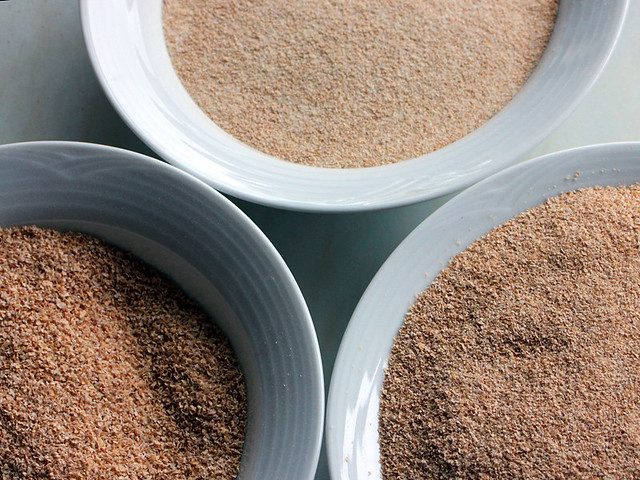

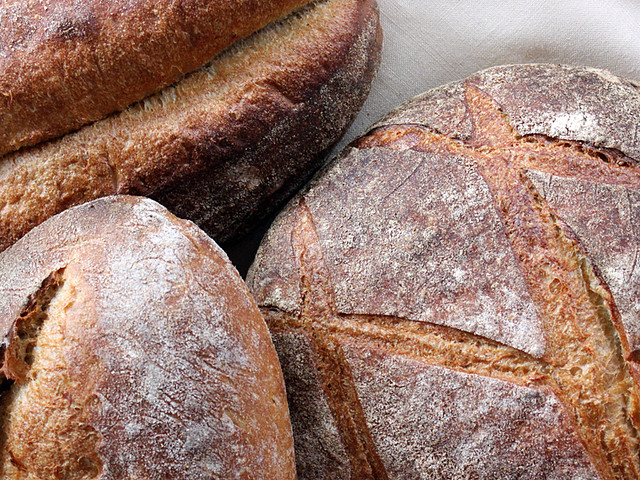

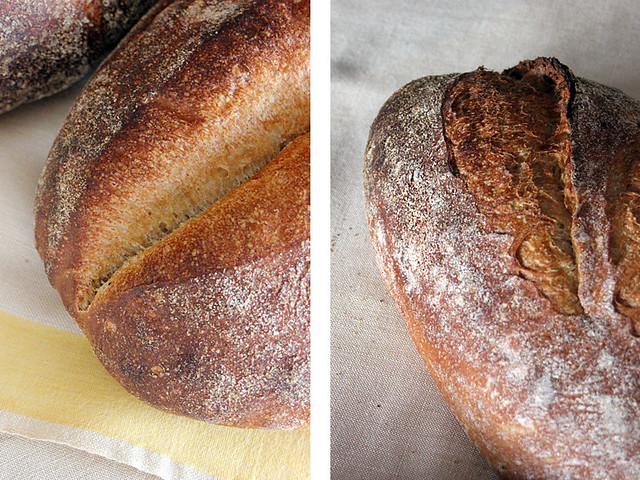

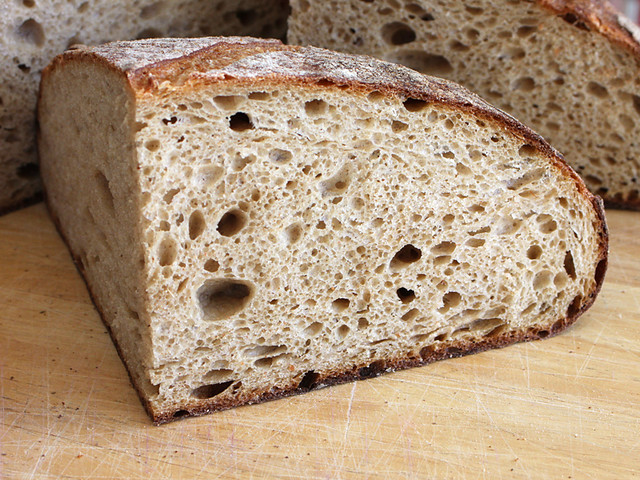



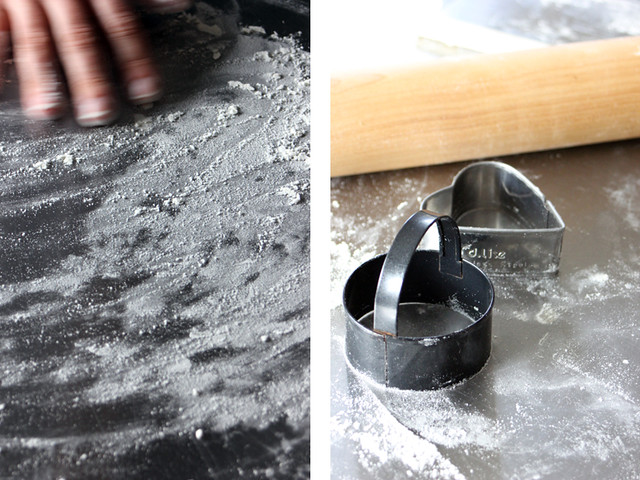
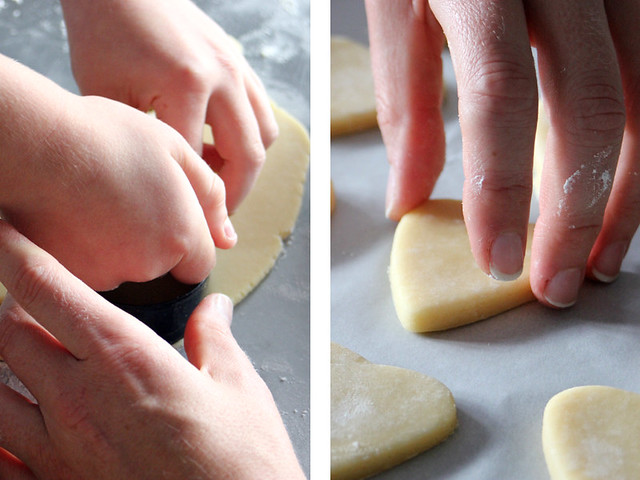

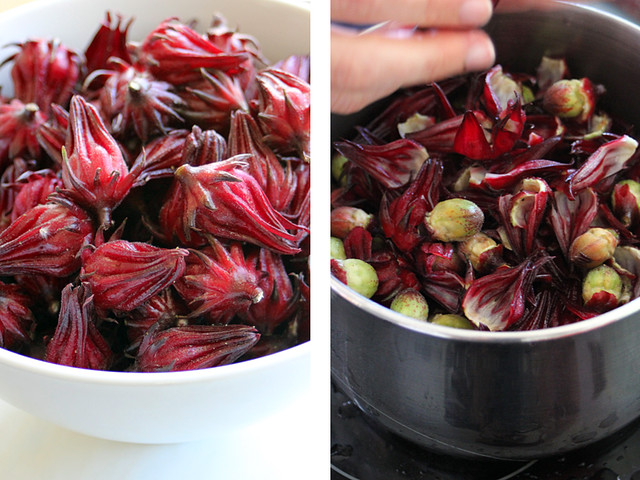

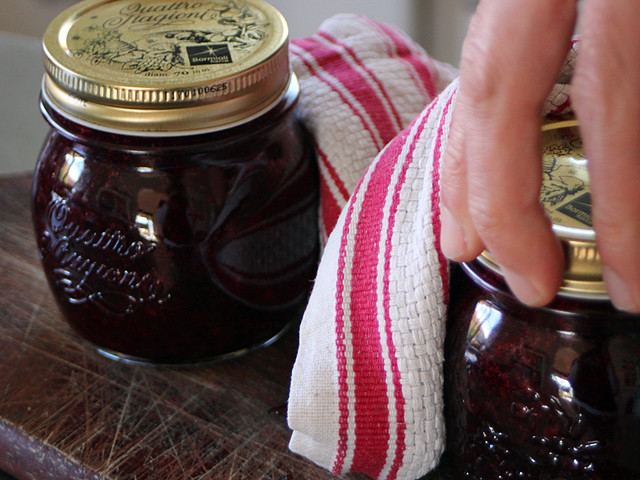
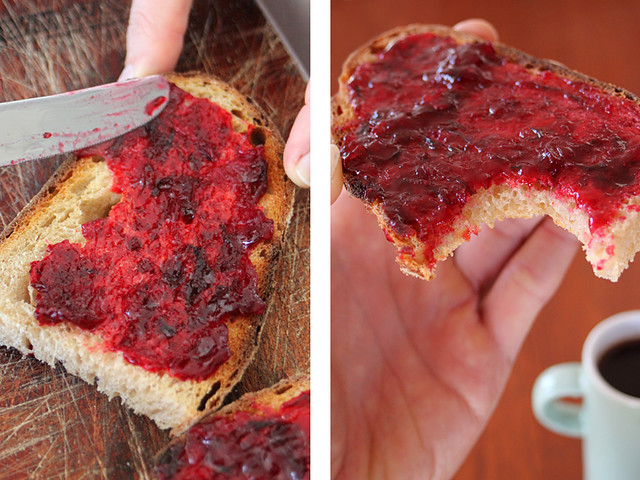


Comments
Thanks again, Phil!
This makes a lot of sense and fits my experience (although I have yet to smell and taste really fresh flour :)) Too bad finding a real stone-grinding mill that sells fresh flour is so hard...
Have a great weekend!
Jarkko
Phil,
Miche are my favorite breads, remind me of my moms stories as a child in a farming village in France during the second world war. I've quiet often lazily just made a mix of sifted whole wheat and a bit of plain white flour as "high extraction", till I started buying from local miller in Upstate New York. Of course I've been milling of late, but with summer the heat makes if iffy to keep grain stored, as the bugs start infesting the grain!
Still I will follow a lot of your hard work and research and see what I can make? My moniker was the lazy baker!
As for sinus infections, yes they suck! I've been fighting sinus issues for a long time due to deviated septum, now my nose doesn't work any better even after operation that left it just as stuck as it was before! Medicine didn't work, so for relief I've been using a capiscum spray which actually has helped somewhat!
Get well soon, we need you back kneading and inspiring!
Jeremy
Hey Jeremy,
That's an amazing heritage to have ... authentic and no pretensions in that bread ... life giving food.
Feeling a lot better now ... just getting used to winter air ...
For a 'lazy baker' you have been making some a large amount of great breads!
Cheers,
Phil
Hey Phil,
Just off from my shift at work..a bit late, but it'll be slow tommorow....so, I have two loaves going, Francese stirato...my levain was a bit weak and I had to toss my last two efforts in the bin till they were refreshed! So back at it again for a late night bake. Then a sourdough, with the idea of a loaf pan bread to make Peanut butter and jelly sandwiches, total Americana! I am using the "old" mother dough from the fridge, and a good whole wheat levain, bit of spelt for healthy milled whole grain and the rest organic white! Will see what comes of this obsessive late night..so far the doughs feel good!
Best,
Jeremy
Hello Phil,
your miche looks beautiful. Its my goal to bake a big miche of 2kg. I have one question. Did you proof the Fendu loafs in a basket or in a baker's couche ?
thanks in advance
Thanks Kallisto,
Good luck with your miche plans. They are very rewarding.
The Fendu was proofed in a lined basket.
Cheers,
Phil
Yesterday I visited our flour shop in my town where I live. I wasn't quite sure which of the flours to buy. They sell many different flours even from france. As I saw the French Type 85 flour i had to buy it in order to try out your miche formula. I'm so curious how miche will turn out. :-D
in applause, Phil. I admire your beautiful breads, and read your sifting information with great interest.
And what a lovely jam - how does it taste like?
I do hope you are soon completely recovered,
Karin
Thank you Karin,
I am well and truly on the mend ... just trying to catch as much sun as possible ... we seem to have had weeks of rain and clouds.
The closest I can describe the jam is a bright sour plum jam ... refreshing.
Cheers,
Phil
Beautiful bread and photos. I have yet to start home milling, but have a keen desire to get started. I am particularly interested in the sieving aspect. I will have to track down proth5's posts related to that. Thanks again for sharing your process and lovely photos!
Cheers,
Kirk
Your welcome Kirk,
Sieving can be messy work ... but I find it very rewarding. Proth5 has a wealth of information in those posts.
Cheers,
Phil
I recently bought a 50 ga mesh sieve. Amazing, the creative possibilities that such a simple tool offers, even with store-bought flours. Rewarding indeed.
Tom
hello, your blog is so inspiring! Love your style.
i was wondering what you mean by previous leavin build? Just the starter? And at what hydration for the starter?
I know it's an old post but a very good one at that!
Pages